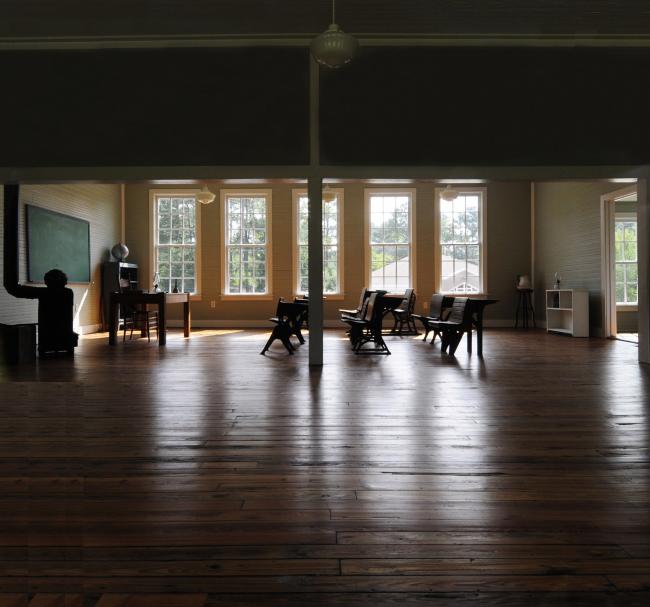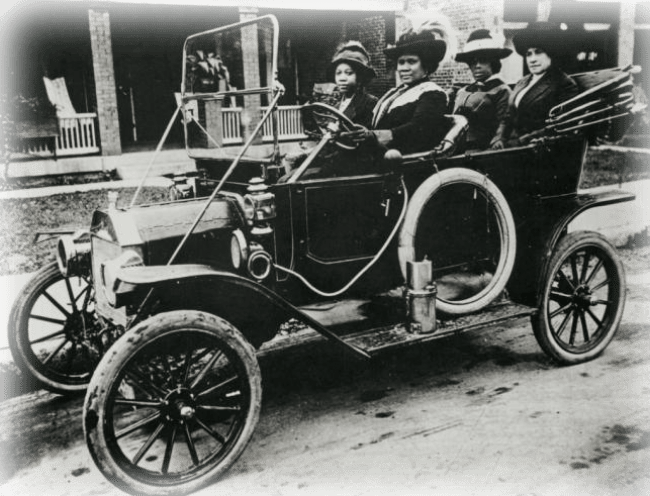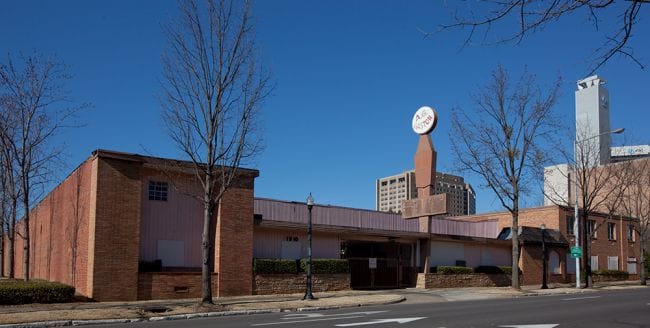
Six insights: Preserving Black history for a more equitable future
Six insights: Preserving Black history for a more equitable future
We’re proud to be part of the growing movement to preserve and lift up a more accurate, equitable public memory of America. That was the subject of our latest Park Bench Chat, a conversation with Keith Weaver, Trust for Public Land board member and executive vice president of Global Policy and External Affairs for Sony Pictures Entertainment; and Brent Leggs, executive director of the National Trust for Historic Preservation’s African American Cultural Heritage Action Fund and author of Preserving African American Historic Places. Watch the full video here, or read on for six key takeaways.
“Preservation is transcendent.”
Leggs’s earliest foray into historic preservation was a project to inventory all the Rosenwald schools in his home state of Kentucky. In the early 20th century, Booker T. Washington and philanthropist Julius Rosenwald worked together to build over 5,000 public schools in Black communities across the South. George Washington Carver was the landscape designer for many of these schools, and America’s first Black licensed architect, Robert Taylor, devised the plans. “But for me it became personal when I learned my mom and dad attended Rosenwald schools,” Leggs says. He described the “multisensory experience” of standing in a decaying Rosenwald school building, starting to “make the connection that preservation is transcendent: that Booker T. Washington’s vision of uplifting Black America through this social movement still lived on in me.”
 Inside the historic Pine Grove School, a Rosenwald School in St. Andrews, South Carolina. As many schools were built in areas that lacked electricity, the plans relied on natural lighting. Photo credit: Wikipedia / Bigskybill
Inside the historic Pine Grove School, a Rosenwald School in St. Andrews, South Carolina. As many schools were built in areas that lacked electricity, the plans relied on natural lighting. Photo credit: Wikipedia / Bigskybill
“So many places are now protected because of Black professional leadership, and because of the role of Black communities in advocating for it.”
Leggs joined the effort to conserve Villa Lewaro, the mansion built by Madam C.J. Walker, America’s first female self-made millionaire. The cosmetics empire Madam Walker launched in the early 1900s funded the construction of her 34-room estate in Irvington, New York—just down the road from estates owned by Jay Gould and John D. Rockefeller. “She integrated the most expensive Zip code in America at the time,” Leggs said.
Today, Villa Lewaro is preserved thanks to the interest and energies of Black preservationists like Ambassador Harold E. Doley, Jr., who owned the home in the 1990s and 2000s and spearheaded the effort to protect the property with a preservation easement.
 Madam C.J. Walker behind the wheel in 2011. She launched a cosmetics business that made her America’s first female self-made millionaire. Photo credit: Wikipedia
Madam C.J. Walker behind the wheel in 2011. She launched a cosmetics business that made her America’s first female self-made millionaire. Photo credit: Wikipedia
“We can create access and bring the benefits of preservation to communities, and let them lead.”
Leggs is working to address the legacy of historic preservation that has sometimes resulted in gentrification and displacement of historically Black communities. For example, in the Treme Historic District of New Orleans, Black homeowners have been fined for not maintaining the exterior of their homes to comply with preservation codes. “That seems like an injustice,” says Leggs, who helped launch a grant program in Treme to cover homeowners’ costs for preserving their properties. “It’s not the role of preservation to penalize and burden Black families.”
“Preservation isn’t just about telling stories, and it’s not just about confronting cultural inequity within our national inventory. It’s about economic development and entrepreneurship.”
To ensure that preservation projects are advancing equity, Leggs and Weaver envision a Black-led movement that benefits Black communities. And there’s so much potential: a recent feasibility study for preserving the A.G. Gaston Hotel as part of the Birmingham Civil Rights National Monument revealed that the revitalization and reuse of this hotel would create jobs and generate $80 million in tax revenue. “There are financial benefits to revitalizing these historic neighborhoods, but how do we ensure the community is at forefront of making decisions and has authority to do that?” Leggs says.
 The A.G. Gaston Motel in Birmingham was the site of several key chapters in the midcentury civil rights movement. Photo credit: Carol Highsmith, Library of Congress
The A.G. Gaston Motel in Birmingham was the site of several key chapters in the midcentury civil rights movement. Photo credit: Carol Highsmith, Library of Congress
“Momentum is building.”
Of all the sites on the National Register of Historic Places, just two percent represent the experiences of Black Americans. “A huge portion of our history has not been recognized,” Weaver said. “The Trust for Public Land is committed to increasing this number.” For decades, we’ve worked alongside communities to create and preserve their natural and cultural heritage. Now, we’re strengthening our longstanding commitment to helping communities preserve Black history, with the launch of The Trust for Public Land’s Black History and Culture Advisory Council. Leggs has joined and Weaver chairs the newly formed working group of experts and advocates who are advancing this goal nationwide.
Leggs says the partnership aligns with related efforts from institutions like the Getty Museum in Los Angeles and the University of Pennsylvania. The Trust for Public Land’s mapping expertise can be put to use to help preservationists identify and prioritize opportunities, and our five decades of experience with complex real estate deals for public benefit is a welcome addition. “Then I think this is an opportunity for The Trust for Public Land to stretch, to test its intellectual curiosity and capacity, and find something new,” he says.
“We can leverage history to empower, to move beyond trauma and pain. “
The history of America includes segregation, oppression, tragedy, and brutality. “But that’s only one half of the story,” says Leggs. Through community-led historic preservation, we can “tell stories and preserve places that go beyond the stereotypical Black experience that’s often rooted in slavery, pain, trauma, and struggle.” That’s a common theme running through the educational opportunities for Black students in the South that Booker T. Washington created through the Rosenwald Schools, the entrepreneurship of Madam C.J. Walker, or the vision, commitment, and organizing power of Black civil rights activists in Birmingham. Even when the sites he’s helping preserve contain a painful history, he says, “I’m looking for stories of resistance, self-determination, and agency.”
This raw, beautiful landscape in Southern California is home to Indigenous heritage sites, and it provides critical habitat for threatened and endangered species. Urge President Biden to safeguard this extraordinary landscape today!


Donate to become a member, and you’ll receive a subscription to Land&People magazine, our biannual publication featuring exclusive, inspiring stories about our work connecting everyone to the outdoors.
See how our supporters are helping us connect people to the outdoors across the country.

